The Royal Tenenbaums
8.2 /10 1 Votes
80% Rotten Tomatoes 3.5/4 Roger Ebert Genre Comedy, Drama Duration Language English | 7.6/10 IMDb 8.2/10 Letterboxd Country United States | |||||||||||||||||||||||||||||||||
 | ||||||||||||||||||||||||||||||||||
Release date December 14, 2001 (2001-12-14) (United States: limited)January 4, 2002 (2002-01-04) (United States: wide) Writer Wes Anderson, Owen Wilson Cast (Royal Tenenbaum), (Etheline Tenenbaum), (Chas Tenenbaum), (Margot Tenenbaum), (Richie Tenenbaum), Owen Wilson (Eli Cash)Similar movies Student Services , The Voyeur , All Ladies Do It , Jamon Jamon , The Lover , P.O. Box Tinto Brass Tagline Family isn’t a word, it’s a sentence. | ||||||||||||||||||||||||||||||||||
The royal tenenbaums trailer 2001
The Royal Tenenbaums is a 2001 American comedy-drama film directed by Wes Anderson and co-written with Owen Wilson. The film stars Danny Glover, Gene Hackman, Anjelica Huston, Bill Murray, Gwyneth Paltrow, Ben Stiller, Luke Wilson, and Owen Wilson. Ostensibly based on a non-existent novel and told with a literary narrative, the story follows the lives of three gifted siblings who experience great success in youth, and even greater disappointment and failure in adulthood. The children's eccentric father Royal Tenenbaum (Hackman) leaves them in their adolescent years, returning to them in after they have grown, and falsely claiming to have a terminal illness. Long after he was shunned by his family, Royal gradually reconciles with his children and ex-wife (Huston).
Contents
- The royal tenenbaums trailer 2001
- Plot
- Cast
- Themes
- Development
- Casting
- Filming
- Style
- Soundtrack
- Release
- Box office
- Critical reception
- Accolades
- Legacy
- References
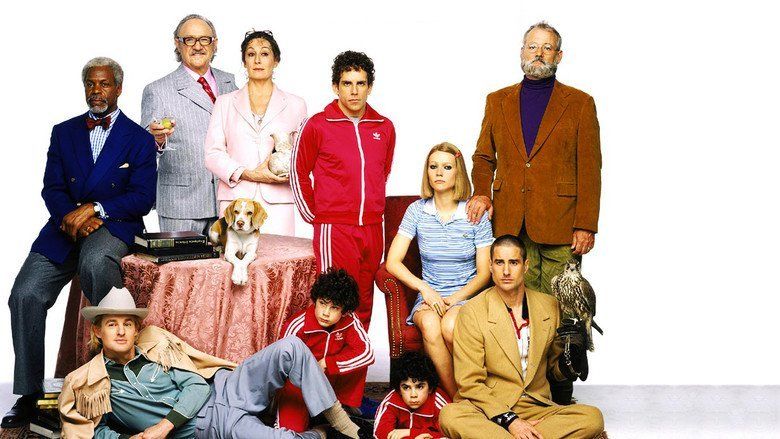
With a variety of influences, including Louis Malle's 1963 film The Fire Within and Orson Welles' 1942 film The Magnificent Ambersons, the story involves themes of the dysfunctional family, lost greatness and redemption. An absurdist and ironic sense of humor pervades the film, which features an extensive soundtrack.
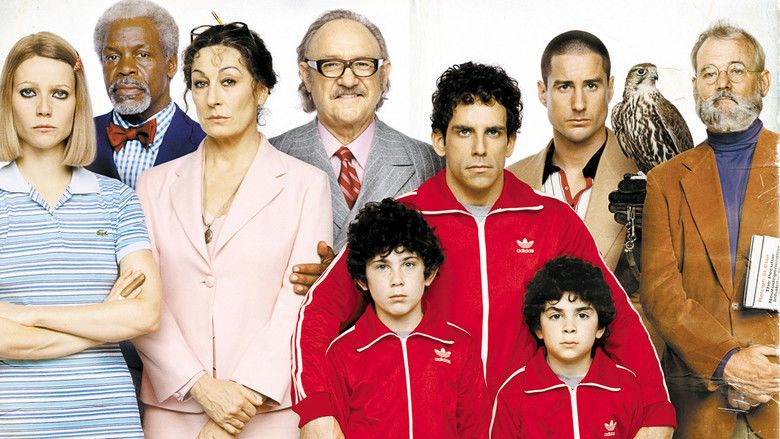
The Royal Tenenbaums was shot around New York City, including a house in Harlem used for the Tenenbaum residence. Despite this, the filmmakers placed effort into distinguishing itself from a recognizable New York, with fashions and sets combining the appearances of different time periods.
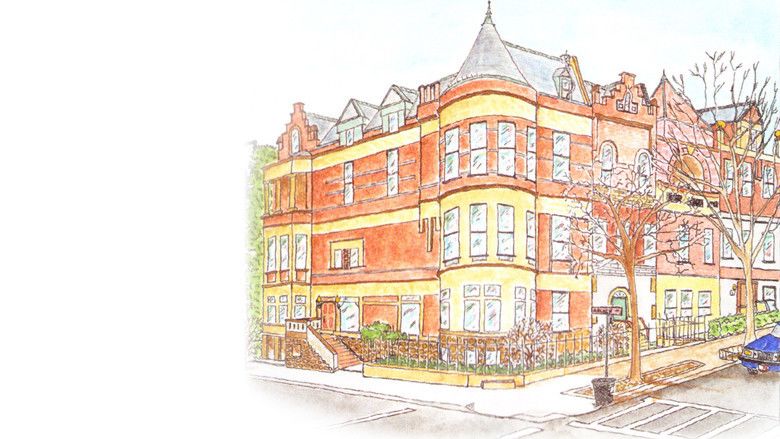
After debuting at the New York Film Festival, The Royal Tenenbaums received positive reviews from critics and was Anderson's most financially successful film to date. Hackman won a Golden Globe for his performance, and the screenwriters were nominated for the Academy Award for Best Original Screenplay. In 2016, it was included in BBC's 100 Greatest Films of the 21st Century.
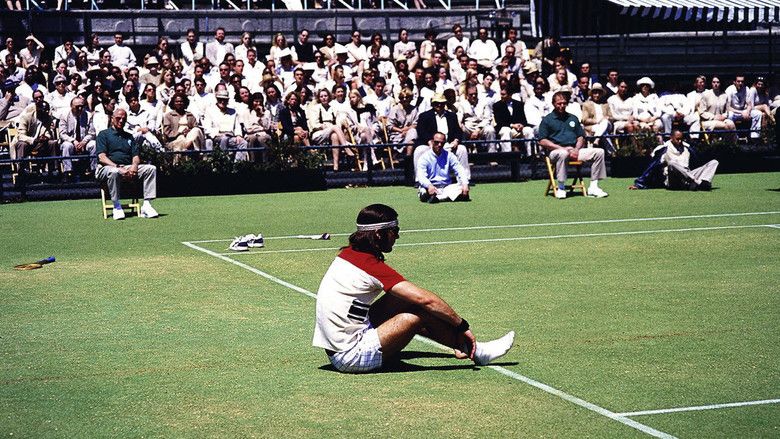
Plot
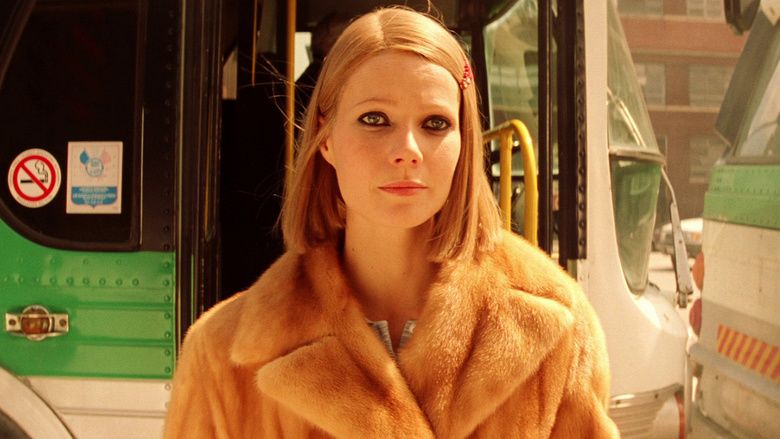
Royal Tenenbaum explains to his three children, Chas, Margot, and Richie, that he and his wife, Etheline, are separating. Each of the Tenenbaum children achieved great success at a very young age. Chas is a math and business genius, from whom Royal steals money. Margot, who was adopted by the Tenenbaums, was awarded a grant for a play that she wrote in the ninth grade. Richie is a tennis prodigy and artist. He expresses his love for adopted sister Margot through many paintings. Royal takes him on regular outings, to which neither of the other children is invited. Eli Cash is the Tenenbaums' neighbor, and Richie's best friend.
Twenty-two years later, Royal is kicked out of the hotel where he has been living. All of the Tenenbaum children are in a post-success slump, with Richie traveling the world in a cruise ship following a breakdown. He writes a letter to Eli revealing his love for Margot. Chas has become overprotective of his sons, Ari and Uzi, following his wife Rachael's death in a plane crash. Margot is married to neurologist Raleigh St. Clair, from whom she hides her smoking and her checkered past. Raleigh is conducting research on a subject named Dudley Heinsbergen.
Etheline's longtime accountant, Henry Sherman, proposes to her. Learning of Henry's proposal, Royal claims that he has stomach cancer in order to win back the affections of Etheline and his children. Etheline calls each of her children home, and Royal moves into the family home and sets up medical equipment in Richie's room. Royal learns of Chas' overprotective nature and takes his grandsons on an adventure involving shoplifting and dog fighting. Upon their return, Chas berates him for endangering his boys, and Royal accuses Chas of having a nervous breakdown.
Eli, with whom Margot has been having an affair, tells her that Richie loves her. Royal discovers the affair and objects to Margot's treatment of Raleigh, who confides to Richie his suspicions of Margot. He and Richie hire a private investigator to spy on her. Meanwhile, Henry investigates Royal's cancer claim and discovers his hospital had closed years before, his doctor does not exist, and that his cancer medication is only candy. He confronts Pagoda, the family servant, and gathers the whole family to tell them what he has discovered. Afterwards, Royal and Pagoda move out of the house.
Richie and Raleigh get the private eye's report on Margot, which reveals her history of smoking and sexual promiscuity, including a previous marriage to a Jamaican recording artist. Both men take the news hard, with Richie going into a bathroom, shaving off his hair and beard, and slashing his wrists. Dudley finds him in a pool of blood, and Raleigh rushes him to the hospital. As the Tenenbaums sit in the waiting room, Raleigh confronts Margot and then leaves. Richie escapes the hospital and meets with Margot. They share their secret love and they kiss.
Royal decides that he wants Etheline to be happy, and finally arranges for a divorce. Before Henry and Etheline's wedding, Eli, high on mescaline, crashes his car into the side of the house. Royal rescues Ari and Uzi, but the boys' dog, Buckley, is killed. Enraged, Chas chases Eli through the house and wrestles him to the ground. Eli and Chas agree that they both need psychiatric help. Chas thanks Royal for saving his sons and for buying them a Dalmatian from the responding firemen as a replacement for Buckley. Forty-eight hours later, Etheline and Henry are married in a judge's chambers.
Some time later, Margot releases a new play inspired by her family, Raleigh publishes a book about Dudley's condition, Eli checks himself into a drug rehabilitation facility in North Dakota, and Richie begins teaching a junior tennis program. Chas becomes less overbearing and overprotective of his children. Royal seems to have improved his relationship with all of his children, and seems to be on better terms with Etheline. He has a heart attack and dies at the age of 68. Chas accompanies him in the ambulance on the way to the hospital, and is the only witness to his death. The family attends his funeral together, where the epitaph dubiously reads that he "Died tragically rescuing his family from the wreckage of a destroyed sinking battleship."
Cast
The Royal Tenenbaums has an ensemble cast, led by Hackman. Alec Baldwin also serves as the narrator. The fictional family is played by:
Themes
Journalist Jesse Fox Mayshark wrote that, in comparison to the similarly-titled 1942 film The Magnificent Ambersons by Orson Welles, Anderson's story follows an older mother considering remarriage, creating a stir in the family. Professor Claire Perkins wrote the stir has minor class and racial elements, with Chas refusing to call Henry by his first name and Royal calling Henry an "old black buck". Royal also calls Henry "Coltrane" and speaks jive, drawing on racial stereotypes found in media. To the Magnificent Ambersons family drama template, Mayshark wrote Anderson added his "naturally redemptive instincts", stressing "forgiveness" over villainizing the guilty. Perkins observed that before Royal's death, he had endeared himself to each Tenenbaum in some way. To achieve this, he had to force his way back into the family's lives, as an intruder professing an intent to "make up for lost time". The prospect of Royal and Etheline rekindling their marriage is largely regarded as impossible, though Etheline weeps at Royal's false terminal illness, and Royal inquires her about her "love life".
Author Mark Browning also identified the dysfunctional family and family happiness as a key theme. Mayshark commented on the depiction of decline after genius, with all of the characters being past the peak of their greatness and now being left "sad, individually and collectively". Browning assessed the Tenenbaum sons and daughter as child prodigies, with "clear-cut genius status". Ethel is not negligent as a mother, fostering her children's talents, though in dispensing money without question she may have spoiled them. Although the film ends without any of the characters regaining their lost glory, they form new bonds, particularly between Royal and Chas, or realize secret desires, in the case of Richie and Margot.
Film Professor Christopher Robe commented on the loss of loved ones, particularly Royal's parents and Chas' wife Rachel, having an impact on the characters's depressed psychology. Royal's mother Helen O'Reilly Tenenbaum is rarely named, but her role in shaping Royal and guiding his behaviour is profound, with Robe arguing this is signified by a shot of Royal standing under a painting of Helen in a World War II Red Cross outfit. Royal's father is never named, but Royal also misses him; Robe further hypothesizes Chas alienating his sons after Rachel's death shows that family history is repeating itself.
Development
French director Louis Malle's works, such as his 1971 Murmur of the Heart, were generally an influence on Wes Anderson, with The Royal Tenenbaums particularly drawing from The Fire Within (1963), where a suicidal man tries to meet his friends. A line from The Fire Within is translated into English and appears as "I'm going to kill myself tomorrow". The Magnificent Ambersons was also an influence, with Anderson acknowledging he may have subconsciously selected the main set for its reminiscence of Welles' production. E. L. Konigsburg's book From the Mixed-Up Files of Mrs. Basil E. Frankweiler, in which the characters Claudia and Jamie run away to live in the Metropolitan Museum of Art in New York, inspired the story of Margot and Richie hiding out in a museum. Having read the book, Anderson said it long stuck with him.
Much of the child prodigy material is inspired by J.D. Salinger's characters in the 1961 book Franny and Zooey. The children of the Glass family in Salinger's work are precocious with an abundance of exceptional talents. Franny and Zooey also features characters wearing distinctive fashions and a character with the name Tannenbaum. However, the name Tenenbaum was taken from that of family acquaintances of Anderson.
Richie and Margot's relationship was inspired by one of Anderson's childhood friends who loved his sister, and Anderson's interest in the incest taboo, acknowledging it became more believable when the story was revised to make Margot adopted. Owen Wilson and Anderson completed the screenplay in two years, needing the extended time because of its complexity.
Casting
Gene Hackman was Anderson's choice for Royal, with Anderson saying, "It was written for him against his wishes". Etheline Tenenbaum was also written with Anjelica Huston in mind. Hackman was hesitant about accepting the role, citing his lack of understanding of or association to Royal. Hackman's agent persuaded him to assume the role, though his reluctance caused Michael Caine to be considered. Gene Wilder was also rumored to be considered.
Hackman's decision to star made it easier to assemble a cast of high-profile actors to appear with him. However, Ben Stiller and Gwyneth Paltrow were only available for a limited amount of time, requiring the shooting schedule to work around them. Following a nadir in his career with Larger Than Life and The Man Who Knew Too Little in the 1990s, Bill Murray had opted to focus on supporting parts in offbeat comedies, starting with Anderson's Rushmore and then The Royal Tenenbaums. Anderson discovered Stephen Lea Sheppard, who played Dudley, through his friend Judd Apatow, as he was acting in Apatow's television series, Freaks and Geeks.
Filming
Around 250 sets were employed during photography, with art director Carl Sprague saying the crew avoided sights that would have identified New York City, even altering street signs. The house used in the film is located near the famous Sugar Hill in the Hamilton Heights section of Harlem in Manhattan. The address is 339 Convent Avenue. For the "quintessential New York story", Anderson went location scouting in May 2000, and spotted 339 Convent Avenue, admiring what he described as "a storybook quality". The owner was Willie Woods, who was planning to remodel it, and agreed to delay the project for principal photography over six months. Anderson said the dalmatian mice that populate the house were given their spots via a Sharpie.
The Waldorf-Astoria was employed for the hotel scenes, while Central Park Zoo was used to depict a rain forest. Richie's ship was depicted via a United States Navy ship used for training. The crew also added 10,000 square feet of AstroTurf at Forest Hill, to depict the Richie's tennis match.
During production, Anderson gave Huston photographs of his mother, who like Etheline, was an archaeologist. Huston said, "Wes would send pictures of his mother in aviator jackets or on archaeological digs, and he very specifically wanted me to wear a certain locket. Finally, I asked him, 'Wes, am I playing your mother?'" Anderson replied this was not the case.
Anderson and Huston had a tense relationship with Hackman on set. On the first day Hackman and Huston appeared in a scene together, Huston had to slap him, with her later saying the slap was real and "I hit him a really good one. I saw the imprint of my hand on his cheek and I thought, he's going to kill me". During young Margot's birthday scene in the opening scenes, Huston's hair caught fire from a birthday candle. Anderson credited Kumar Pallana with extinguishing the blaze before Huston was seriously injured.
As shooting continued, the bird used for Mordecai was captured by a citizen of New Jersey, who demanded a price for its return. The bird was instead replaced with one more white in color.
Style
The storytelling has been described as "absurdist", ironic, and "whimsical". Mayshark wrote literature shapes the narrative, which is presented as a book with chapters, a prologue and epilogue. Commenting on the literary framework, Browning detailed how the first scene has the camera looking down on the book being checked out at the library, followed by the tone of J.D. Salinger's contemplation of "disillusionment". Archaic dialogue with the feel of literature ("You've made a cuckold of me") is combined with crass, casual dialogue ("We can swing by her grave, too"). Ethel also reveals her fondness for Royal's "little expressions", such as "true blue".
However, Mayshark added the style is "imaginatively visual", with detailed sets and an ambiguous time setting, featuring fashions from the 1960s to the present. Professor Whitney Crothers Dilley identified the setting with the New York City of the 1970s, matching the backdrop style to depictions of the city in the films The French Connection and Midnight Cowboy; this feel is heightened by music popular in the 1970s, by The Rolling Stones and Paul Simon. Dilley argued this depiction of a lost New York is connected to "literary history".
Wes Anderson's brother Eric Chase Anderson sketched proposed appearances for the characters before shooting. The character Richie is presented as a tennis star. with headbands and armbands, and sunglasses that virtually hide his face, until his "ritualistic" shaving scene reveals him. The appearance of Margot, played by Paltrow, was modeled after singer Nico. Chas, played by Stiller, appears in a red tracksuit, matching him with Ari and Uzi and suggesting "running away from sadness". The young performers playing Royal and Ethel's sons and daughter wear the same costumes as their adult counterparts, evoking "arrested development".
With the cinematography, Wes Anderson enjoyed keeping the camera mobile, giving new perspectives in a single take with no actual cut. Analyst Thomas Caldwell judged the cinematography as unusual, comprising "steady symmetrical medium shots" that help the viewer see the characters' emotional anguish more clearly, particularly in their eyes. Author Gustavo Mercado considered the medium shots as a tool to give character and surroundings comparable levels of attention, to communicate the character's eccentricities and activities. Mercado assessed the scene with Margot smoking in the bathroom to display "carefully chosen lighting, depth of field, wardrobe, body language, and ... composition".
The paintings in Eli's apartment are by Mexican artist Miguel Calderón. Font designer Mark Simonson noted Anderson makes extensive use of typography, in particular Futura and its variation Futura Bold. For characters who are not biologically Tenenbaums, such as Raleigh, other typefaces are used, such as Helvetica on the covers of the character's books.
Soundtrack
The soundtrack features rock songs from the 1960s, 1970s, 1980s, and 1990s. There have been two soundtrack album releases for the film, though not all songs appeared on the albums. Songs used include Paul Simon's "Me and Julio Down by the Schoolyard", Van Morrison's "Everyone", John Lennon's "Look at Me", Nick Drake's "Fly", The Mutato Muzika Orchestra version of The Beatles' "Hey Jude", "These Days" by Nico, and two songs by The Rolling Stones. Erik Satie's "Gymnopédie" is also used in the film, as is the iconic song of A Charlie Brown Christmas (1965) by Vince Guaraldi.
In 2002, the soundtrack was re-released containing the score, composed by Mark Mothersbaugh, along with more of the songs. The Rolling Stones' songs "She Smiled Sweetly" and "Ruby Tuesday" were omitted for lack of rights.
Release
The film premiered at the New York Film Festival on October 5, 2001, which had previously screened Anderson's Rushmore in 1998. Distributed by Touchstone Pictures, it opened in New York City and Los Angeles in December 2001. In February 2002, it went to the Berlin International Film Festival.
To mark a decade since its debut, Anderson and his stars returned to the New York Film Festival for a screening of The Royal Tenenbaums in fall 2011. After previously publishing a DVD edition, The Criterion Collection released a Blu-ray in Region A in 2012.
Box office
On its opening weekend, The Royal Tenenbaums made $276,891 in five theaters, or around $55,396 at each venue. By February 2002, it doubled Rushmore''s total gross in the U.S. box office.
The film finished its run on June 20, 2002 with a gross of $52,364,010 in North America. It made $19,077,240 in other territories, for a worldwide total of $71,441,250. With the final $70 million gross, it remained Anderson's most financially successful film when it returned to the New York Film Festival in 2011. The Grand Budapest Hotel surpassed it in 2014, and Moonrise Kingdom (2012) made more in North America.
Critical reception
The film was met with mostly positive reviews, holding an 80% "Fresh" rating at the website Rotten Tomatoes, based on 202 reviews, and a 7.5/10 weighted average. On its premiere at the New York Film Festival, A.O. Scott wrote in The New York Times that it eventually won him over as charming, and that Hackman brought "quick precision and deep seriousness [that] nearly rescue this movie from its own whimsy". Todd McCarthy of Variety called the film "As richly conceived as the novel it pretends to be". Richard Schickel, in Time, wrote, "As with Anderson's Rushmore, there's a certain annoying preciousness to this film—it's not so consistently wise or amusing as he thinks it is—but it has its moments". Roger Ebert awarded it three and a half stars, admiring how viewers can be ambiguous to the events in the story. Mick LaSalle of the San Francisco Chronicle was enthusiastic in praising the film as "like no other, an epic, depressive comedy, with lots of ironic laughs and a humane and rather sad feeling at its core." In The New Yorker, Anthony Lane, commented on the setting, which did not truly feel like New York, but "a step-city, or a city-in-law", and that "the communal oddity" gradually won him over. Lou Lumenick hailed it as "the year's best movie" and "possibly the most quintessential New York film since Manhattan" in The New York Post. Peter Travers found all of the cast great in different ways, while also singling out Hackman. L.A. Weekly's Manohla Dargis, wrote it had enough laughs to be classified as a comedy, but it contained "a deep vein of melancholia to its drollery". In The Guardian, Joe Queenan embraced it as "A bizarre redemption tale".
Some critics disagreed about the success of the film and its style, with New York's Peter Rainer writing, "Anderson is something of a prodigy himself, and he's riddled with talent, but he hasn't figured out how to be askew and heartfelt at the same time". In The Los Angeles Times, Kenneth Turan assessed the film as indulging too far in Anderson's vision, creating an unknown world. In his 2015 Movie Guide, Leonard Maltin gave it two and a half stars, complimenting the eccentricity but finding no storyline.
Time listed Royal Tenenbaums in its Top 10 Troubled Genius Films list in 2009, comparing Anderson's characters to Salinger's, in an "ultimately touching package". Time also named Henry Sherman as one of 10 memorable accountant characters in film history, citing his decency, success as an author and lack of confidence in his pursuit of Etheline, in 2013. In 2014, The Huffington Post journalist Lisa Thomson evaluated it as one of Anderson's best films, and that finding laughs in divorce was a highlight. In 2017, Vanity Fair cited Richie's tennis meltdown scene as one of the best tennis scenes in cinema history, making analogy to Björn Borg.
In 2008, a poll taken by Empire ranked The Royal Tenenbaums as the 159th greatest film ever made. A 2016 poll of international critics assembling BBC's 100 Greatest Films of the 21st Century also voted it one of the 100 greatest motion pictures since 2000. Hackman has received kudos for his performance.
Accolades
The film received a nomination at the 74th Academy Awards for Best Original Screenplay. CNN reported this was a disappointment, as it was also a contender for nominations for Best Cinematography, Best Art Direction and Best Actor for Hackman. Hackman did win the Golden Globe for Best Actor in a Musical or Comedy, but was unable to accept the award in person.
Legacy
The narration and the way the film follows each family member was reprised in Fox's critically acclaimed television sitcom Arrested Development. Jason Bateman, one of the show's stars, described the show as "The Royal Tenenbaums shot like COPS." Arrested Development creator and head writer Mitchell Hurwitz said that when he saw The Royal Tenenbaums, he already had the idea for Arrested Development in mind and thought, "Well, that's it, I can't do that anymore," but subsequently changed his mind.
Alec Baldwin, the narrator, has effusively praised the film, including it in his Top 10 Criterion Collection and calling it "arguably one of the most original movies, in tone and style, since Robert Altman's M*A*S*H". He also modeled his performance of the character Jack Donaghy on the television series 30 Rock after Hackman's speech and movements as Royal Tenenbaum.
The Tenenbaums' style has been cited as an influence in fashion design, and Margot Tenenbaum has been described as the "muse of the season" for Spring/Summer 2015 collections.
References
The Royal Tenenbaums WikipediaThe Royal Tenenbaums IMDbThe Royal Tenenbaums Rotten TomatoesThe Royal Tenenbaums LetterboxdThe Royal Tenenbaums Roger EbertThe Royal Tenenbaums themoviedb.org
